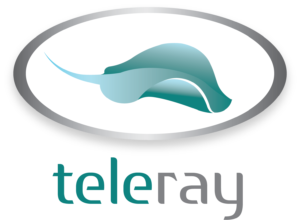MedTech is evolving at a rapid pace as the healthcare industry undergoes broad digitization. Among the new technologies supporting a higher standard of patient care is medical imaging. Radiology is going through a period of innovation as both hardware and software evolve — and new applications emerge.
As we look ahead to 2023, it’s important to explore these emerging technologies and the trends that follow them. Today’s advances impact tomorrow’s practices, and medical imaging stands at the forefront of how digital technology will quickly transform diagnosis, treatment, and total patient care.
Here are some of the radiology and imaging trends to watch in 2023, along with the ways they’ll impact the changing digital healthcare landscape.
Cloud-based storage/exchange
Today, much of healthcare happens in the cloud. Data generated at every point of patient care must go somewhere, and it’s being aggregated into digital charts accessible to patients and providers alike. This virtual standard for data is fueling an even greater level of integration at the point of use for MedTech.
In 2023, expect to see advances in digital synergy between imaging equipment and the cloud systems that support patient data. From scans that directly populate into the cloud to the ability of providers to share images with other clinicians through secure virtual repositories, cloud-based storage and image exchange will set the tone for radiology advancements in the coming year. This is likely to lead to even bigger implications, such as lower cost of care based on the mobility of image data.

Radiology in telehealth
Telehealth is rapidly changing the landscape for different segments of healthcare, including radiology. Today, doctors and patients don’t need to be in the same room to engage in a consult — and neither does the radiology equipment. This is especially useful in rural areas, where bringing together equipment, physicians, and patients in the same place, at the same time, can be especially challenging.
On the backbone of cloud systems, patients can visit a clinic for scans and imaging and then converse later with their provider about the results. Telehealth allows patients and providers to connect over the same images and discuss conditions and treatments with the full breadth of context they’d enjoy at a fully equipped healthcare facility. Providers should expect a boom in radiological telehealth demands in 2023.
AI and ML in medical imaging
Artificial intelligence (AI) and machine learning (ML) are transforming the way providers understand and apply patient data — right down to assisting with diagnosis. AI and ML are being used not only to qualify medical images but also to clarify tolerances that lead to more accurate diagnoses. Imagine a program capable of reading an MRI or CT scan, processing the image to improve clarity, and delivering a possible diagnosis based on evident factors within certain known tolerances, as determined against similar scans.
AI and ML are swiftly moving into the radiology and imaging field, and they’re making it easier for physicians to diagnose with accuracy, confidence, and speed — all factors that improve the standard for patient care and translate to better outcomes.
POCUS and field imaging
Traditionally, radiology’s biggest constraint has been the size and complexity of its equipment: MRI machines that take up an entire room or delicate piezoelectric ultrasound components. Point-of-care ultrasound (POCUS) equipment represents a step toward smaller, simpler, field-ready imaging equipment. Today’s POCUS devices can sync to a smartphone and transmit imaging over a network with the same clarity as larger static devices.
POCUS serves patients in the same way telehealth enables equitable access to medical images for rural patients and anyone displaced from equipment or medical professionals. As the name implies, it brings imaging to the patient. In 2023, we can expect a rise in POCUS in support of telehealth.
The constant evolution of MedTech
As these trends gain momentum and continue to shape the landscape of medical imaging, they’re accelerating advancements in new healthcare practices that lead to better patient outcomes. From AI-driven precision imaging to the synergies made possible by remote patient monitoring, radiology isn’t just an important tool in modern medicine — it’s laying the groundwork for the next generation of healthcare.
For more on emerging trends in diagnostic imaging, visit teleray.com.







